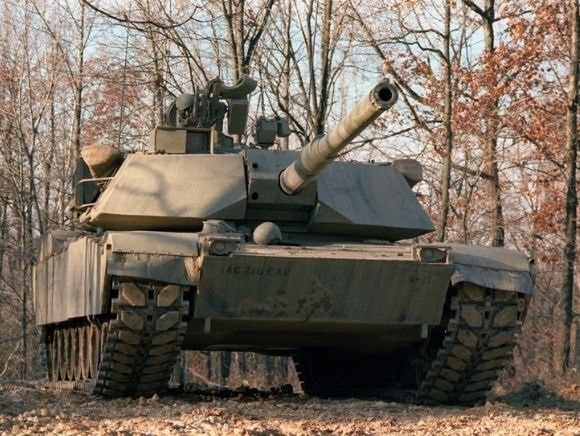Last November, Deputy Secretary of Defense Dr. Kathleen Hicks announced the Pentagon’s plan to fleet up with electric vehicles (EV), replacing all the approximately 170,000 “non-tactical” cars and trucks. The idea inside the five-sided building is to jump on President Joe Biden’s green energy bandwagon, but not all at once. First, tactical vehicles – the go-to-war machines – will be hybrids relying on both petroleum and electricity. So, for a while, U.S. combatant commanders won’t have to convince the enemy to install charging stations as U.S. forces move past the frontlines. However, as Liberty Nation’s Caroline Adana recently reported, the pitfalls facing the Department of Defense (DoD) in an all-EV world look daunting.
 Take just one example of problems the DoD must overcome. Keeping the Defense Department’s non-tactical vehicles charged will depend on a robust electrical grid system, and as Adana explained, “… the electric grid is already dangerously under-dimensioned in America leaving little room for demand spikes.” Though countries like the United Kingdom are ahead of the United States, “in the race toward electrification of vehicles, [Europeans] are waking up to the hidden cost of EVs: namely, a dramatic need for increased grid capacity.”
Take just one example of problems the DoD must overcome. Keeping the Defense Department’s non-tactical vehicles charged will depend on a robust electrical grid system, and as Adana explained, “… the electric grid is already dangerously under-dimensioned in America leaving little room for demand spikes.” Though countries like the United Kingdom are ahead of the United States, “in the race toward electrification of vehicles, [Europeans] are waking up to the hidden cost of EVs: namely, a dramatic need for increased grid capacity.”
This raises a question that military planners will have to answer. What will more likely be available on the battlefield, fossil fuels like gasoline and diesel fuel in trucks or an electrical grid? In the heat of battle, one of the first targets identified will be infrastructure valuable to the enemy, like electrical grids and power generation facilities. Perhaps the solution is small, mobile nuclear reactors to charge vehicles and batteries in the field. According to Defense One, the Defense Department has been looking at small mobile reactors for about two years through “Project Dilithium.”
The requirement is “the reactor should fit on a truck and a C-17 aircraft and generate from one to 10 megawatts of electric power for three years without refueling.” Additionally, the reactor must be “meltdown-proof.” Good idea. According to The Defense Post, a more recent initiative by the Air Force, called “Project Pele,” will produce the mobile truck-mounted nuclear reactors to re-charge batteries close to the fighting at remote operating bases.
However, even with mobile microreactors in the field, batteries are heavy and don’t charge quickly. For example, a standard Tesla lithium-ion battery pack weighs 1,200 lbs. When fully charged, the batteries will provide an average range of 343 miles. A “supercharger” battery charger will take 40 minutes to reach 80% charge or a range of 274 miles. But the supercharging capability puts a lot of stress on the battery life. To fill an average gas-powered vehicle with a 15-gallon tank, 92 lbs. of fuel, takes about 5 minutes – and it might go as far as 450 miles.
 In an opinion piece published in a prominent Washington, D.C. newspaper, Charles Lane posed a good question as the Pentagon considers going all-electric with its non-tactical vehicles: When motorists in Virginia were stranded for more than 24 hours in a 48-mile traffic jam on Interstate 95 in early January with subzero temperatures, what if all the cars were electric? Battery life is substantially reduced in cold weather, and hundreds of motorists imprisoned in their cars would be hard-pressed to keep warm. Now imagine a similar traffic-jam-scene where U.S. “non-tactical” electric military vehicles are moving in convoy to deliver critical ammunition and other support to ground forces in combat in a northern tier battlefield, like Korea, in the winter. Such a scenario would put the warfighters’ future at considerable risk. But, again, the Defense Department can overcome these problems with prior logistics planning.
In an opinion piece published in a prominent Washington, D.C. newspaper, Charles Lane posed a good question as the Pentagon considers going all-electric with its non-tactical vehicles: When motorists in Virginia were stranded for more than 24 hours in a 48-mile traffic jam on Interstate 95 in early January with subzero temperatures, what if all the cars were electric? Battery life is substantially reduced in cold weather, and hundreds of motorists imprisoned in their cars would be hard-pressed to keep warm. Now imagine a similar traffic-jam-scene where U.S. “non-tactical” electric military vehicles are moving in convoy to deliver critical ammunition and other support to ground forces in combat in a northern tier battlefield, like Korea, in the winter. Such a scenario would put the warfighters’ future at considerable risk. But, again, the Defense Department can overcome these problems with prior logistics planning.
Then there is China. The Defense Post reported that Beijing controls “73% of global lithium cell manufacturing capacity in 2019, followed by the U.S. at 12 percent.” Furthermore, as it stands, by 2025, the global capacity to manufacture lithium batteries will increase 400%, with the U.S. share declining. If the Department of Defense goes electric, the lithium battery supply chain must be a consideration. Little is happening to address the need for domestic sources and supply chains for metals like lithium and high-tech microelectronic components. The way the Pentagon’s plans look at this stage, dewy-eyed bureaucrats are jumping to the commander-in-chief’s tune, singing, “yes sir, yes sir, three-bags-full,” without asking “what’s in the bags?”
The views expressed are those of the author and not of any other affiliation.
~ Read more from Dave Patterson.




